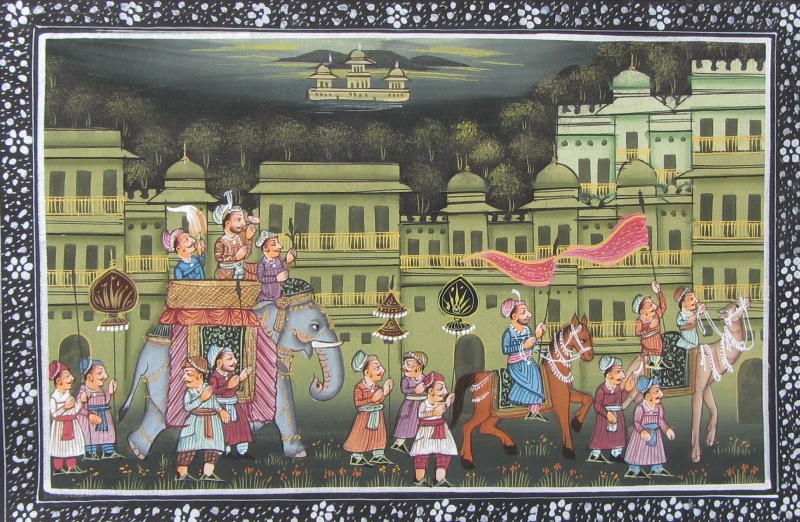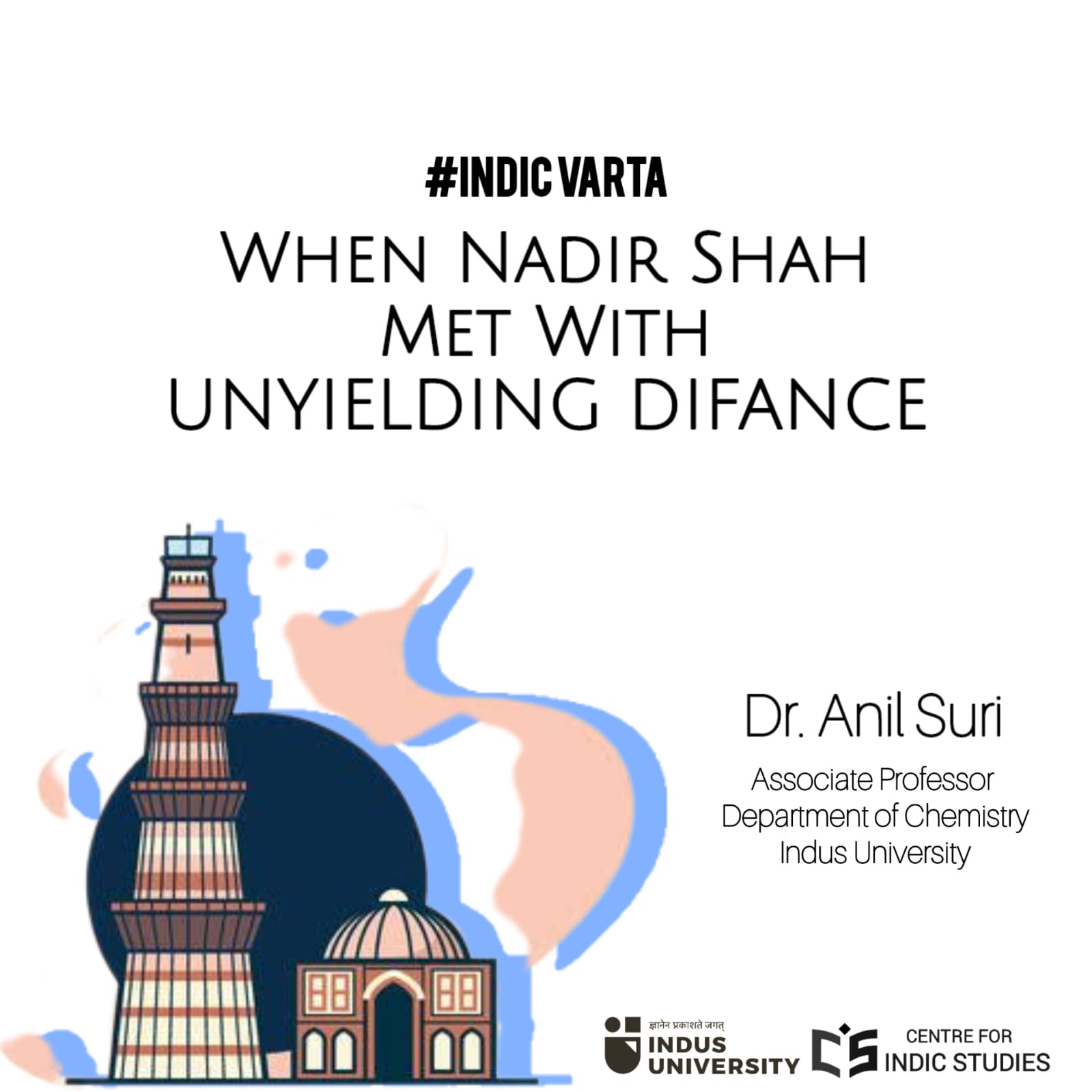- Visitor:30
- Published on:
The Mughals through Travelers’ Eyes
In this article Khalid Umar challenges some common adulatory and hagiographic myths about the Mughals. He says that contrary to what leftist peddlers say, the Mughals did not build cities but destroy those which were already flourishing. This becomes evident from the evidence of the travelers who traveled India during the Mughal rule. The Mughals were also Islamic fanatics who destroyed Hindu temples to create Islamic monuments.

Ibn Battuta who travelled in India extensively, during his sojourn, found villages after villages deserted. Nature’s ravages or man’s atrocities might have made them flee, or more probably they would have been enslaved and converted, or just carried away. But the fact that habitations being completely deserted shows that large groups suffered together and did not forsake one another in times of trial and tribulation. This factor swelled the number of slaves.
It is a fact that Mughals practised and encouraged slavery as a religious diktat and indulged in slave trade which is antithesis of culture and ethos of India and Hinduism. But this aspect has been relegated under the carpet by the historians, writers, film makers, to glorify Mughals who not only practised slavery in India but sent countrymen as slaves to Arabia.
The Destruction of Cities and Countryside
Historical evidence does not show that Mughals were builders of cities. We find from the accounts of travelers during the Mughal period that contrary to the popular belief that the Mughals developed cities, they in fact depopulated them and created army cantonments.
401 years ago, Sir Thomas Roe, a merchant diplomat with the East India Company was England’s first official ambassador to India returned to England. Roe arrived at the port of Surat in September 1615 with a letter from King James I to the then reigning Mughal Emperor, Jahangir, seeking a trade agreement. He remained there for 4 years.
I recently read his book, “the Embassy of Sir Thomas Roe to the Court of the Great Mogul 1615-1619” and it’s astonishing. Throughout his travels, Ambassador Roe maintained a fascinating record of his exploits in his memoirs. A manuscript of his memoirs and letters is held at the British Museum Library.
Sir Thomas Roe noted, “Present Mughal Emperor Jahangir has ruined Indian cities, depopulated them and also issued orders not to allow the repair of the destruction done….. Jahangir seeks to destroy everything that hasn’t already been destroyed by his ancestors.”
Commenting on the living conditions of ordinary Indians, he writes, “Indians live in mud houses which are not fit for living while Jahangir lives in a lavish stone house…. There is no law of inheritance, Jahangir owns all property and wealth and only leaves what he wishes… There is no written law and the king rules by his own word… poor men build their houses of reed and canes for want of timber..… Yet it cannot be denied that this King is one of the mightiest Princes in Asia, as well in extent of territory equal to the Turk, far exceeding the Persian…. But the Governance so uncertain, without written law, without Police, the Customs mingled with barbarism, religions infinite, the buildings of mud (except the Kings houses and some few others)…”
This was the Mughal ‘care’ for their subjects when they were at their zenith.
Plunder of Indians’ Wealth
While Mughal emperors were destroying and renaming of Indian cities, they were also sending money out of India especially to the Turkish Caliph to solidify their position in the Islamic world power hierarchy.
Emperor Babur writes in his autobiography Baburnama: “Suitable money gifts were bestowed from the treasury on the whole army, to every tribe there was, Afghan, Hazara, Arab, Balluch etc. to each according to its position. Every trader and student, indeed every man who had come with the army, took ample portion and share of bounteous gift and largess”.
In 1576, a Mughal Haj caravan left Agra with its party of sponsored pilgrims and an enormous donation of Rs 600,000. In 1577, another Haj caravan left with a double bounty of Rs 500,000 and Rs 100,000 for the Sharif of Mecca, who was a descendant of Prophet Mohammad’s grandson Hasan ibn Ali. In just one instance in 1659, Aurangzeb exported to Mecca Rs 660,000 in an era when one rupee was worth 280 kilograms of rice. This same Aurangzeb hanged to trees all Indian peasants who had defaulted on their taxes.
Mughals Constructed Islamic Monuments by Destroying Hindu Temples
Mughal era monuments are pointed out by liberals as adding value and diversity to the Indian culture. Taj Mahal is the often cited example which in my opinion is not the defining symbol of Indian architecture. If you really want to see the Indian Architecture, then there are thousands of temples. If you want to see the engineering marvel then visit Kailash Temple at Ellora Caves, or Ajanta caves painting or Kanheri caves.
Even, Taj Mahal was not conceived as a public architecture, as till the Mughal rule it was a private to the court. It is more of an example of the apathy of the rulers that when when Shah Jahan started building Taj Mahal (1632) millions were dying due to food shortages in which, according to the Dutch report 7.4 million people perished. Read about the Deccan Famine (1630-32).
Destruction of Indigenous Art and Culture
Mughals destroyed the Hindu Architecture and replaced it their own monuments. The scars Mughals left on the society can be seen still ongoing court cases. The most recent one concluded is the Ram Janambhoomi (Babri mosque). Other notable examples are Somnath Temple, Kashi Vishwanath, Krishna Janam bhoomi and Jagannath Puri which were destroyed on the orders of Mughal emperors, and in many of these places the Islamic structures still stand.
An estimate says that over 40,000 Hindu monuments were destroyed during the Islamic invasion of India. It was not only destruction of places of worship but Hindu culture as well. As temples have always been a centre of cultural activity.
- 15 min read
- 0
- 0










